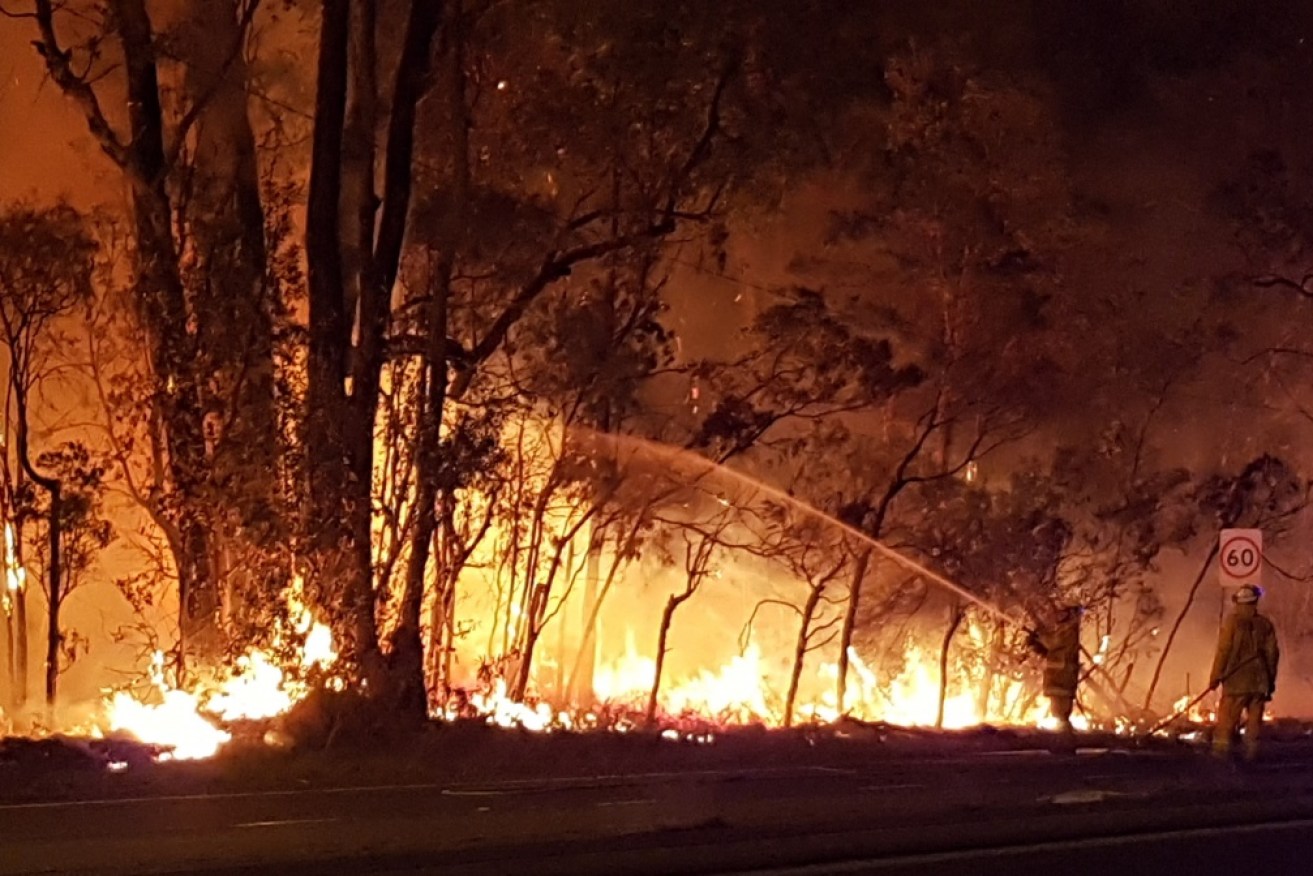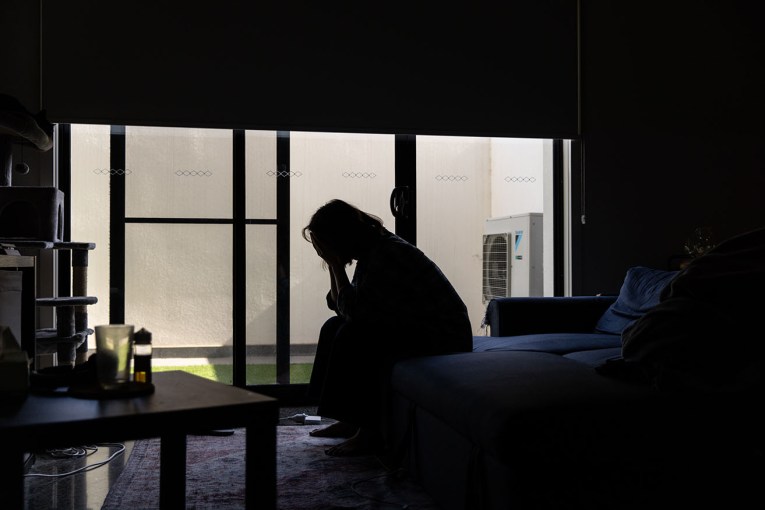Drought, fires and fear take their toll on peace of mind in our battered bush


NSW firefighter Greg Mullins said: "This is the worst bushfire season buildup that I can remember." Photo: Getty
As the country exits a record-breaking dry winter, regional Australians are expected to face another onslaught of bushfires and drought, ahead of an unusually warm spring predicted by the Bureau of Meteorology.
The early-summer weather forecast will likely intensify existing drought conditions and exacerbate the bushfire risk across eastern Australia, with the BoM reporting a hotter and drier-than-usual spring.
Drought-affected farmers in NSW, Victoria and South Australia will be hit hardest by a continuation of rainless weather and the chance of sweltering heatwaves, the forecast said.
“We might have to wait till as late as autumn in 2019 to start seeing some recovery rains in the drought areas,” Andrew Watkins, manager of long-range forecasts at the BoM, said.
The drawn-out, seemingly endless perpetuation of droughts and bushfires has taken a heavy toll on the mental health of firefighters, farmers and at-risk residents.
‘What if only I had?’
Firefighters tend to question themselves profusely after a major bushfire, with the most common question being, “what if only I had?”, former NSW Fire and Rescue commissioner Greg Mullins said.
Mr Mullins, a volunteer firefighter who has battled on the front lines for more than four decades, found that many emergency service workers struggled to talk about their mental health in the aftermath of a bushfire.
“We’re in a profession where we’re meant to make other people’s problems go away, and part of the mental health challenge is a sense of failure when houses burn down or people lose their lives.”

Greg Mullins is chair of the NSW Ambulance Service Advisory Board. Photo: Supplied
After the catastrophic bushfires which enveloped the Blue Mountains community in western Sydney, destroying almost 200 homes in October 2013, Mr Mullins recalled driving on the desolate streets one evening only to see some of his own firefighters with “tears running down their faces”.
“I have to admit, I got in my car and I cried that day … Seeing my people hurting so badly, feeling that they’d let their communities down, it was very tough to take.”
Mr Mullins sought “medical treatment and interventions” after temporarily retiring from firefighting.
“The sights, sounds, smells, things I saw and was involved in stayed with me and I needed help.
“I didn’t recognise that early enough.
“I look around now and I recognise it in other people … it’s very widespread,” Mr Mullins said.

Greg Mullins is seen rescuing a woman and her dog from a burning house at Lindfield, NSW during the 1994 bushfires. Photo: Andrew Jacob
‘I need time to mourn’
On March 18, Jan Harris smelled a “tiny wisp of smoke” but about a minute later noticed “a wall of smoke” heading towards her Tathra home, so she, her husband and 30-year-old son immediately evacuated the property.
That day, Ms Harris, 59, lost her home in the destructive bushfire that ravaged the small NSW coastal town.

Jan Harris: “This New Year’s eve, there wont be a feast that will be cooked outside and served to a dozen guests around our cherry wood dining table.” Photos: Jan Harris
She and her family individually see a psychologist to deal with the impact of losing everything they owned in the horror bushfire which destroyed 65 homes in total.
“I cant see my future at the moment.”
Ms Harris said her anxiety is often triggered by the smell of smoke, the sound of a water bombing helicopter or concern over an uncertain future.

Jan Harris with her son. Photo: Jan Harris
“We’re regularly waking up three o’clock in the morning … thinking ‘what’s going to happen, when are we going to start building, do we really want move back out there, what are we going to do?’
“I need time to mourn, to grieve, to accept what I have lost … the lives that are no longer there,” Ms Harris said.
‘It gets into your bones’
Charlie Prell, a sheep farmer in Crookwell, NSW said if not for the wind turbine on his land, there would be little to no money flowing in due to the horror drought.
Mr Prell said the “massive” income from the wind farm is making a “big, positive difference” to his mental health this time round.

Greg Prell spoke at the Time2Choose rally in Sydney’s CBD in April this year about the need for a sustainable future. Photo: Supplied
Without it, Mr Prell would likely relive some of the psychological impacts he suffered during the so- called Millennium drought – a period of consistently low rainfall during cooler seasons for southwestern and southeastern Australia between 1997 and 2009.
The Millennium drought was “all-consuming”, Mr Prell said.
“The drought just gets into your bones and goes on day after day after day, night after night after night.”
Mr Prell was forced to sell a third of his farm to “stay alive”.
That prolonged period of drought was the main trigger for his wife’s nervous breakdown and his own anxiety which he is still battling.
“I get panic attacks but not nearly as frequently or as intense as they used to be.”
‘Stuck in the process of grief’
Psychologist Carol Ride said it has become increasingly difficult for people to recover from extreme weather events because they are occurring more frequently.
Dr Ride, the president of Melbourne-based nonprofit Psychology for a Safe Climate, said people who have experienced a traumatic event go through a grieving process and eventually reach a stage where they are able to accept the reality of what has been lost.

Carol Ride: “It’s about our capacity to be courageous and … ability to admit we might not be able to cope in the same way as we have in the past.” Photo: Supplied.
But if their situation keeps repeating itself, people could “get stuck in the process of grief” by continuing to drudge up feelings of sadness, despair and hopelessness, Dr Ride said.
Those affected by this year’s drought or drawn-out bushfire season may struggle to picture a future or recreate what was lost, she added.
A survey of more than 1000 people affected by Victoria’s 2009 Black Saturday bushfires found the keys to mental health recovery involved building social connections and joining community groups.
Professor Lisa Gibbs from University of Melbourne’s School of Population and Global Health led the six year study.
She found people who continued to value their natural environment in spite of the devastation caused by the bushfires were more likely to have better mental health and wellbeing outcomes.
“If you can really focus your efforts on social connections and the natural environment, that can make an important difference,” Professor Gibbs said.








